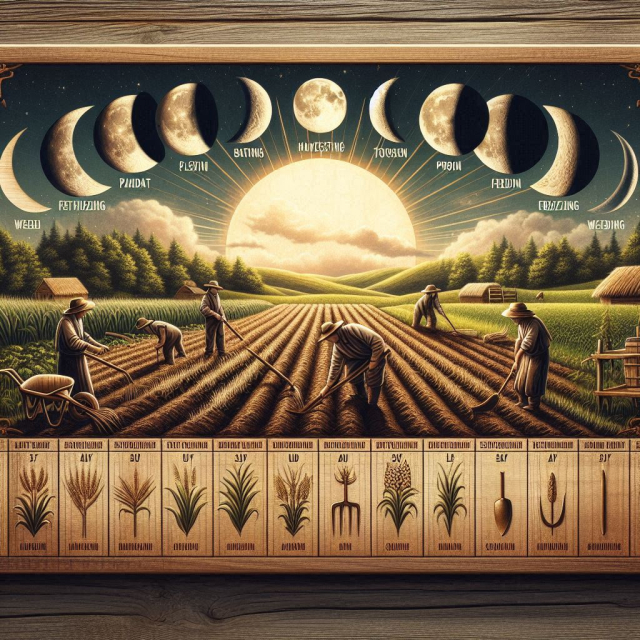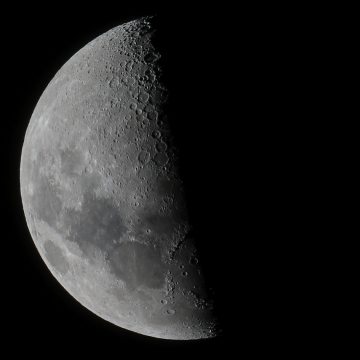Moon farming has been a practice rooted in tradition and folk wisdom for centuries. Since ancient times, farmers have observed the moon and adjusted their agricultural practices according to its cycles. In this article, we will further explore the fascinating world of lunar farming, focusing on how the phases of the moon can influence cultivation during the month of March 2025. In addition to examining the myths and realities behind this ancient practice, We'll dive into practical, science-backed advice and a deeper understanding of how to make the most of the power of the moon in modern agriculture.
The Relationship between the Moon and Agriculture: Myths, Realities and Science.
The relationship between the moon and agriculture has been debated for centuries, with a number of beliefs and practices being passed down from generation to generation. It is important to understand both the myths and realities behind this connection to gain a more complete view of its impact on agriculture.
Myths:
Planting during the Full Moon produces more abundant crops: This myth has persisted for centuries, with the belief that the energy of the Full Moon promotes plant growth. However, the scientific evidence behind this claim is limited.
The Waning Moon is the best time to harvest: Although this belief is common in many cultures, there is no solid scientific evidence to support the idea that the Waning Moon is the optimal time to harvest. Most farmers base their harvest decisions on the state of maturity of the crops, rather than the lunar phases.
Realities:
The Moon Affects Tides and Soil Moisture Levels: The moon's gravitational influence affects tides, which can have an impact on groundwater levels and soil moisture. Some farmers take advantage of this knowledge to plan the irrigation of their crops.
Moonlight can influence plant growth: Moonlight has been shown to affect photosynthesis and plant growth in some studies. However, the magnitude of this influence can vary depending on plant species and other environmental conditions.
The Moon Phases and their Impact on Crop in March 2025.
Now that we've explored the myths and realities behind the moon's influence on farming, we can look at how the moon phases align with farming in March 2025:
New Moon:
During the New Moon in March 2025, scheduled for the 2nd, some may choose to sow seeds if they wish to encourage plant germination and growth. The energy of the New Moon is believed to promote renewal and growth, although the scientific evidence behind this claim is limited.
Crescent moon:
During the Waxing Moon phase in March 2025, which spans from the 3rd to the 17th, it is considered an auspicious time to plant fast-growing crops if you want them to develop quickly. The energy of the Crescent Moon is believed to support plant growth and vitality, although scientific evidence is limited.
Full moon:
The Full Moon in March 2025 is scheduled for the 10th. During this phase, some may choose not to plant due to the belief that it is a time of rest in the lunar cycle. However, others may see no problem in planting during this day if environmental conditions permit.
Waning moon:
During the Waning Moon phase in March 2025, which runs from the 18th to the 31st, it is considered an optimal time to plant root crops if you want them to grow strong and healthy. The energy of the Waning Moon is believed to promote root growth, although scientific evidence is limited.
Practical Tips for Successful Lunar Farming.
Regardless of the moon phases, here are some practical tips for growing successfully:
- Know your local conditions: Understand the weather and soil conditions in your area to better plan the planting and care of your crops.
- Keep detailed records: Keep track of planting dates, harvesting dates, and other farming events to identify patterns and make informed decisions in the future.
- Experiment and observe: Try different growing approaches and see how your plants respond to different environmental conditions and moon phases.
- Consult reliable sources: Seek information from trusted sources, such as agronomists and agricultural extension agents, for guidance on best agricultural practices in your area.
Moon farming is a practice that has persisted throughout history and remains relevant today. While some people may find benefits in aligning with the lunar phases when cultivating, it is important to recognize that this practice is surrounded by myths and realities. By combining tradition with science, we can gain a more complete understanding of how the moon can influence the growth and health of our crops. With a holistic and experimental approach, we can farm more consciously and sustainably, honoring both traditional knowledge and scientific advances in agriculture.






